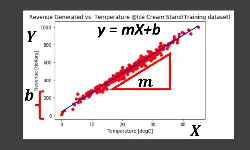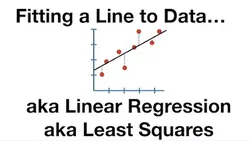
Linear Regression in R for Public Health 
This course will teach you how to use the R programming language to perform linear regression analysis for public health research. This course provides an introduction to linear regression in R, covering topics such as data exploration, model building, and interpretation of results. Participants will gain the skills to apply linear regression to public health research. ▼
ADVERTISEMENT
Course Feature
![]() Cost:
Cost:
Free
![]() Provider:
Provider:
Coursera
![]() Certificate:
Certificate:
Paid Certification
![]() Language:
Language:
English
![]() Start Date:
Start Date:
17th Jul, 2023
Course Overview
❗The content presented here is sourced directly from Coursera platform. For comprehensive course details, including enrollment information, simply click on the 'Go to class' link on our website.
Updated in [March 06th, 2023]
Linear Regression in R for Public Health is an ideal course for those looking to gain a comprehensive understanding of linear regression and its application in public health. Learners will be introduced to the concept of correlation and linear regression, and will learn how to import and examine data, fit models, and assess how well the model fits the data. They will also learn how to test the underlying assumptions of the model, and use the free and versatile software package R to do so. Additionally, learners will gain an understanding of the other members of the regression family, and how they differ from linear regression. This course is perfect for those looking to gain a deeper understanding of predictive modeling, machine learning, and regression modeling.
[Applications]
Upon completion of this course, participants will be able to apply linear regression in R for public health research. They will be able to use the software to prepare data, assess how well the model fits the data, and test its underlying assumptions. Participants will also be able to use the skills they have learned to apply linear regression to other types of regression models.
[Career Paths]
1. Public Health Data Analyst: Public health data analysts use linear regression to analyze data from public health studies and surveys. They use the results of these analyses to inform public health policy and practice. They also develop predictive models to forecast the impact of public health interventions. As the amount of data available to public health professionals continues to grow, the demand for data analysts with expertise in linear regression is expected to increase.
2. Epidemiologist: Epidemiologists use linear regression to study the distribution and determinants of health-related states or events in specified populations. They use the results of their analyses to identify risk factors for disease and to develop strategies for prevention and control. As the need for evidence-based public health interventions grows, the demand for epidemiologists with expertise in linear regression is expected to increase.
3. Biostatistician: Biostatisticians use linear regression to analyze data from clinical trials and other health-related studies. They use the results of their analyses to inform clinical decision-making and to develop evidence-based public health interventions. As the need for evidence-based public health interventions grows, the demand for biostatisticians with expertise in linear regression is expected to increase.
4. Health Economist: Health economists use linear regression to analyze data from health-related studies and surveys. They use the results of their analyses to inform public health policy and practice. They also develop predictive models to forecast the impact of public health interventions. As the need for evidence-based public health interventions grows, the demand for health economists with expertise in linear regression is expected to increase.
[Education Paths]
1. Master of Public Health (MPH): This degree is designed to provide students with the knowledge and skills to become public health professionals. It covers topics such as epidemiology, biostatistics, health policy, health services administration, and environmental health. The MPH degree is becoming increasingly popular as the demand for public health professionals grows.
2. Master of Science in Biostatistics: This degree focuses on the application of statistical methods to the study of biological and medical data. It covers topics such as probability, statistical inference, data analysis, and the design of experiments. This degree is becoming increasingly important as the need for data-driven decision-making in the health sector grows.
3. Doctor of Public Health (DrPH): This degree is designed to prepare students for leadership roles in public health. It covers topics such as public health policy, health services administration, epidemiology, biostatistics, and environmental health. The DrPH degree is becoming increasingly popular as the demand for public health professionals with advanced skills and knowledge grows.
4. Master of Science in Epidemiology: This degree focuses on the study of the distribution and determinants of health-related states or events in specified populations. It covers topics such as study design, data analysis, and the interpretation of epidemiological data. This degree is becoming increasingly important as the need for evidence-based decision-making in the health sector grows.
Course Syllabus
INTRODUCTION TO LINEAR REGRESSION
Before jumping ahead to run a regression model, you need to understand a related concept: correlation. This week you’ll learn what it means and how to generate Pearson’s and Spearman’s correlation coefficients in R to assess the strength of the association between a risk factor or predictor and the patient outcome. Then you’ll be introduced to linear regression and the concept of model assumptions, a key idea underpinning so much of statistical analysis.Linear Regression in R
You’ll be introduced to the COPD data set that you’ll use throughout the course and will run basic descriptive analyses. You’ll also practise running correlations in R. Next, you’ll see how to run a linear regression model, firstly with one and then with several predictors, and examine whether model assumptions hold.Multiple Regression and Interaction
Now you’ll see how to extend the linear regression model to include binary and categorical variables as predictors and learn how to check the correlation between predictors. Then you’ll see how predictors can interact with each other and how to incorporate the necessary interaction terms into the model and interpret them. Different kinds of interactions exist and can be challenging to interpret, so we will take it slowly with worked examples and opportunities to practise.MODEL BUILDING
The last part of the course looks at how to build a regression model when you have a choice of what predictors to include in it. It describes commonly used automated procedures for model building and shows you why they are so problematic. Lastly, you’ll have the chance to fit some models using a more defensible and robust approach.Pros & Cons

Clear and engaging style of teaching

Solid understanding of the basics

Hands on approach to learning

Technical perspective on linear regression

Ample opportunity to practice analysis skills

Typos in reading materials

Answers to questions sometimes wrong

Poorly formatted code and R console outputs

Lack of logical structure in reading materials

Low resolution screenshots of code
Course Provider

Provider Coursera's Stats at AZClass
Discussion and Reviews
0.0 (Based on 0 reviews)
Explore Similar Online Courses

An Introductory Guide to Art Therapy

How to Animate Logos for Companies & Brands

Python for Informatics: Exploring Information

Social Network Analysis

Introduction to Systematic Review and Meta-Analysis

The Analytics Edge

DCO042 - Python For Informatics

Causal Diagrams: Draw Your Assumptions Before Your Conclusions

Whole genome sequencing of bacterial genomes - tools and applications

Data Science: Linear Regression

Simple Linear Regression for the Absolute Beginner

Linear Regression and Linear Models
 Related Categories
Related Categories
 Popular Providers
Popular Providers
Quiz
 Submitted Sucessfully
Submitted Sucessfully
1. What is the main purpose of this course?
2. What software package will be used in this course?
3. What type of regression models will be covered in this course?
4. What is the purpose of linear regression in public health?
Correct Answer: To describe how patient and environmental factors affect our chances of getting ill.


Start your review of Linear Regression in R for Public Health